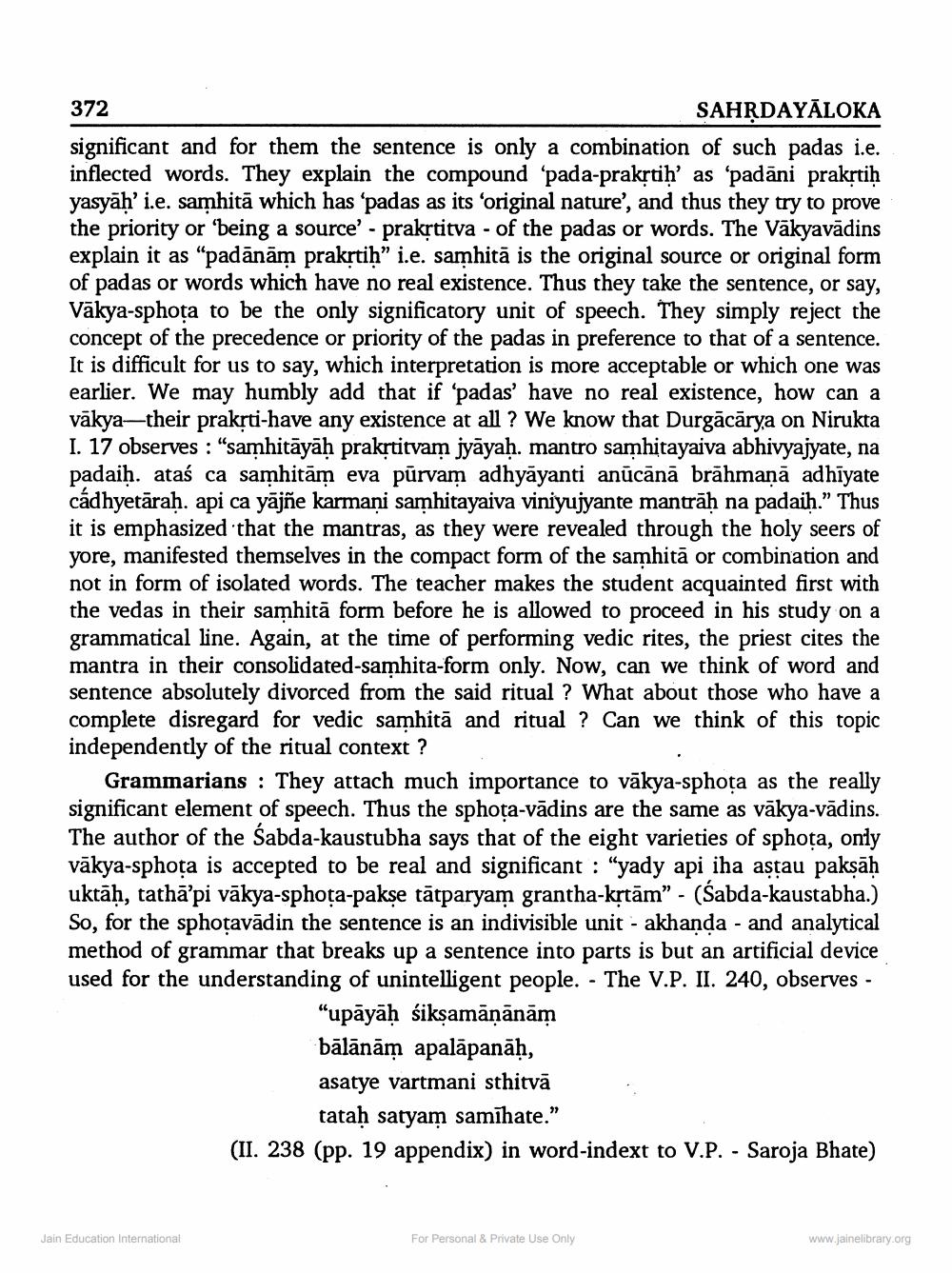________________
372
SAHRDAYĀLOKA significant and for them the sentence is only a combination of such padas i.e. inflected words. They explain the compound ‘pada-praksti” as ‘padāni prakrtiḥ yasyāḥ' i.e. samhitā which has ‘padas as its original nature', and thus they try to prove the priority or being a source' - prakrtitva - of the padas or words. The Vākyavādins explain it as "padānām prakrtih" i.e. samhitā is the original source or original form of padas or words which have no real existence. Thus they take the sentence, or say, Vākya-sphoța to be the only significatory unit of speech. They simply reject the concept of the precedence or priority of the padas in preference to that of a sentence. It is difficult for us to say, which interpretation is more acceptable or which one was earlier. We may humbly add that if 'padas' have no real existence, how can a vākya—their prakrti-have any existence at all ? We know that Durgācārya on Nirukta I. 17 observes : "samhitāyāḥ prakstitvam jyāyaḥ. mantro samhitayaiva abhivyajyate, na padaiḥ. ataś ca samhitām eva pūrvam adhyāyanti anūcānā brāhmaṇā adhīyate cádhyetāraḥ. api ca yājñe karmani samhitayaiva viniyujyante mantrāḥ na padaih." Thus it is emphasized that the mantras, as they were revealed through the holy seers of yore, manifested themselves in the compact form of the samhitā or combination and not in form of isolated words. The teacher makes the student acquainted first with the vedas in their samhitā form before he is allowed to proceed in his study on a grammatical line. Again, at the time of performing vedic rites, the priest cites the mantra in their consolidated-samhita-form only. Now, can we think of word and sentence absolutely divorced from the said ritual ? What about those who have a complete disregard for vedic samhitā and ritual ? Can we think of this topic independently of the ritual context ?
Grammarians : They attach much importance to vākya-sphota as the really significant element of speech. Thus the sphoța-vādins are the same as vākya-vādins. The author of the Sabda-kaustubha says that of the eight varieties of sphoța, only vākya-sphoța is accepted to be real and significant : "yady api iha astau paksāḥ uktāḥ, tathā’pi vākya-sphoța-pakse tātparyam grantha-krtām” - (Sabda-kaustabha.) So, for the sphoțavādin the sentence is an indivisible unit - akhanda - and analytical method of grammar that breaks up a sentence into parts is but an artificial device used for the understanding of unintelligent people. - The V.P. II. 240, observes -
"upāyāḥ śiksamāņānām bālānām apalāpanāḥ, asatye vartmani sthitva
tataḥ satyam samīhate.” (II. 238 (pp. 19 appendix) in word-indext to V.P. - Saroja Bhate)
Jain Education International
For Personal & Private Use Only
www.jainelibrary.org




